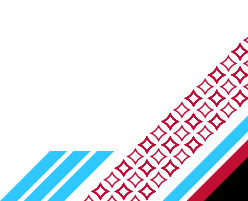Student Resources
As a CIDS major, you'll have access to a variety of resources to help you succeed academically and prepare for your future career. Whether you're pursuing a major in computer science, information systems or data science, this page connects you with essential tools and information, including degree requirements, course flowcharts, internship opportunities and student organizations. Take advantage of these resources to stay on track, explore new opportunities and make the most of your educational journey.

Transfer Students
Students transferring to UWRF with an AA degree or past CS, IS or DS coursework will need to transfer all completed coursework through the Registrar's office so that your personal Degree Audit reflects all courses you have successfully completed.
Computer Science and Information Systems (CSIS) Major
This option has a technical and theoretical emphasis providing students with a comprehensive understanding of software engineering, computing techniques and the underlying theories. Graduates will develop skills relevant to the analysis, design and implementation of sophisticated software/hardware systems and communication networks.
CS Curriculum Flowchart
IS Curriculum Flowchart
IS Four Year Plan
Data Science and Predictive Analytics Majors
The data science and predictive analytics major at UWRF equips students with the skills to analyze complex data, build predictive models and make data-driven decisions. This interdisciplinary program blends computer science, mathematics and business principles to prepare students for high-demand careers in industries ranging from finance and healthcare to technology and beyond.
DS Curriculum Flowchart
The two main tools to use to check your progress towards finishing your degree are:
- Your Degree Audit Report (DAR)
- Your Electronic Student Information System (eSIS)
In CIDS, you have to take either one of the following:
- CIDS 484 Capstone and do a project in your senior year
or
- CIDS 379 Internship (usually in your junior year).
Before you register for CIDS 379, you do have to find a paid job that involves courses in your major. There are a lot of local organizations that would love to have you intern for them!
It is best to use Handshake to look for open positions in the local area or nationally:
- For example 3M recruits UWRF students in September/October for internships during the following summer!
- Other organizations will hire later in the school year too.
- Medtronic, MN IT, Target, Jack Link's, Schwan's, Lexis Nexis and a number of other organizations in the Twin Cities hires interns to work remotely or in person
Once you have secured employment, you should apply for approval from the Internship Coordinator (Dr. A. Varghese). Once your internship is approved, you will get a permission number to register for CIDS 379.
When you register for CIDS 379, note that you can request anywhere from 1 to 6 credits; it defaults to 1 credit and so you will have to remember to sign up for 3 credits. Most people sign up for 3 credits since that's what is required for CIDS 379 to count towards your major.
Most of the interaction with the CIDS department occurs via Canvas - there will be a number of Progress Reports that you will have to submit - 1 Progress Report for each credit you signed up for. There will also be an online "Site Interview" that you will have to arrange with your supervisor at work and the CIDS Internship Coordinator - Dr. A Varghese; finally, there will be a Final Reflection Paper you will have to submit when you are close to done with your internship.
There are two clubs that many CIDS students participate in:
- The Association for Computing Machinery, or ACM, club
- The Data Science club
Visit FalconsConnect to learn more.

